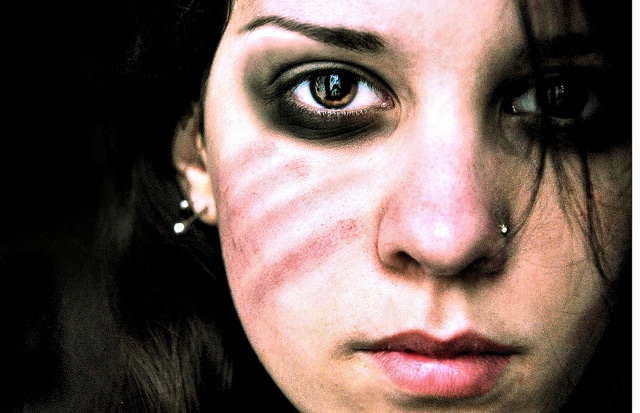
Why are kids so good at coming up with bad ideas? They are constantly finding ways to test their limits. As if they don’t come up with enough hugely dumb ideas on their own, a collective resource for pranks and dares are challenge videos. Challenge video ideas are endless; involving dangerous stunts, elaborate pranks, eating unimaginably gross things, or enduring discomfort or pain. As you would expect, kids are often injured attempting these challenges, and some have even died! Why are children so caught up in the challenge video craze? As a parent, how can you help prevent your child from attempting these dangerous challenges?
Cinnamon Challenge
For this endurance challenge, one must eat a spoonful of cinnamon in less than a minute without drinking water. Sounds easy and harmless, right? Most who attempt the challenge throw up or cough immediately and run for water. However, an unlucky few have suffered asphyxiation, lung scarring, emphysema, and even death. A mom from Kentucky is raising awareness of the dangers of the challenge after her four-year-old son died from asphyxiation (Munchies, 2015).
Salt and Ice Challenge
For this challenge subjects place salt somewhere on their body, then an ice cube on top of the salt. The salt lowers the temperature of the ice causing extremely cold temperatures. The person who can endure the cold the longest is considered the winner. The intense cold experienced is like the effects of frostbite, and children who have attempted the challenge have suffered second and third degree burns (David, 2016).
Banana and Sprite Challenge
This challenge involves eating two bananas and a bottle of soda as fast as possible without throwing up. This amount of food is too much for most human stomachs to handle in such a short time. Many who attempt the challenge vomit, with some danger of choking and asphyxiation (Rob, 2008).
Hot Pepper Challenge
To complete this challenge all you must do is eat a hot chili. Many who attempt this challenge choose one of the hottest chilies in the world, the Carolina Reaper. Chili Peppers contain capsaicin, which when ingested stimulates nerve endings for heat and pain. The levels of capsaicin in a Carolina Reaper can cause vomiting, shortness of breath, dehydration due to sweating, seizures, and even hallucinations (Suzy, 2016).
Cold Water Challenge
For this challenge, you must jump into an ice cold lake and swim to shore. Once you complete the challenge, you pick a friend to do the same thing. This is extremely dangerous as you run the risk of hypothermia and drowning. In Minnesota, a 16-year-old was found dead after attempting the cold-water challenge (Alyssa, 2014).
The Fire Challenge
For the fire challenge, you must cover yourself in a flammable liquid, light it on fire, and then do your best to put out the ensuing flames. This is one of the dumbest challenges I found, and, of course, children have been severely burned attempting it (Andres, 2014).

I Want to Be Seen
Social media has had a tremendous impact on millennials. Videos, images, and posts are used for teaching, innovating, inspiring, laughing, and changing young minds. Social media apps are increasingly in popularity with younger and younger kids, allowing them to interact and communicate globally.
YouTube is an extremely popular social media platform that is commonly used for challenge videos. A recent study found that children desired YouTube even more than Oreos or Disney. Kids love the short clips and browsing freedom YouTube provides (Jennifer, 2016). Today’s youth are watching screens for six and a half hours a day, and a lot of that screen time is devoted to YouTube (Jane, 2015).
Challenge videos are a particularly effective way for kids to exchange ideas and dares, show off, receive appreciation from their peers, and “go viral.” “Look at what I did! Can you top that?” Children who repeatedly watch challenge videos often emulate the challenge and repost, hoping to receive millions of views. Kids who are bored, isolated, or have mental health issues are particularly susceptible to online peer pressures. Narrative reinforcement, refers to the sharing of similar life stories that can normalize and justify unhealthy behaviors likes pranks and self-injury (Whitlock, 2007).
Tips to Protect Your Child
-
- Monitor your kids’ screen use so you know what they’re are up to. Tech tools like TeenSafe help parents monitor browsing history, texts, and social media activity.
-
- Manage which apps your kids access. Talk to them about the positive and negative aspects of social media. Use parental controls so you must approve new app adoptions. Beware of hidden browsing and adopting opportunities within certain apps, like Kik. If it’s inappropriate, block access.
-
- Co-view challenge videos with your child. Challenge their assumptions and express your thoughts and concerns about the challenges. Engagement teaches analysis and problem solving and strengthens the critically important (and fun) parent-child connection. Don’t lecture, discuss.
-
- Brainstorm and perform safe challenges with your children so they can still be a part of the craze.
- Stay educated about new apps, hot topics, and fads by following current events and staying subscribed to GetKidsInternetSafe.

I’m the mom psychologist who will help you GetKidsInternetSafe.
Onward to More Awesome Parenting,
Tracy S. Bennett, Ph.D.
Mom, Clinical Psychologist, CSUCI Adjunct Faculty
GetKidsInternetSafe.com
Works Cited
Alyssa N. (2014) Viral “Cold Water Challenge” May Be Linked to Teen’s Death, Other Injuries
http://abcnews.go.com/US/viral-cold-water-challenge-linked-teens-death-injured/story?id=23679865
Andres J. (2014) What The Hell Is A “Fire Challenge” And How Could It Not Go Horribly Wrong?
http://www.huffingtonpost.com/2014/07/30/fire-challenge-video_n_5634043.html
Angie C. (2015) How to protect your kids from social media dangers
http://www.upstateparent.com/story/life/2015/10/30/socialmedia-positives-negatives-kids-experts-say/74885906/
David T. (2016) Boy, 12, badly injured in “salt-and-ice” challenge
Jane W. (2015) Children spend six hours or more a day on screens
http://www.bbc.com/news/technology-32067158
Jennifer V. (2016) For young kids, YouTube beats Disney, Oreo
http://www.sandiegouniontribune.com/sdut-youtube-top-brand-kids-oreo-disney-2016aug24-story.html
Munchies S. (2015) A Woman Is Trying to End the Cinnamon Challenge After Her Son’s Death
https://munchies.vice.com/en_us/article/this-woman-is-trying-to-end-the-cinnamon-challenge-after-her-sons-death
Rob B. (2008) “Dr. Food Science” mixes bananas and Sprite, conducts other questionable food experiments
Suzy S. (2016) The “Hottest Pepper Challenge” Is An Absurd Risk To Your Health
Whitlock J. (2007) The Internet and self-injury: What psychotherapists should know. Journal Of Clinical Psychology, 63(11), 1135-1143. doi:10.1002/jclp.20420
Photo Credits
Because of you the scratches on my face will never be erased by Erebos, CC by-NC 2.0
#Selfie Ellen De Vos, CC BY 2.0
Don't worry, we will never spam you.









